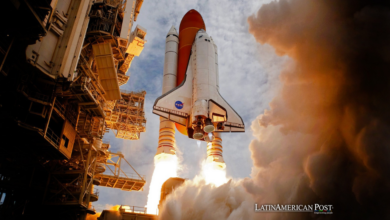Surgeries and Medical Care in Space? NASA Studies Advance
With experiments from various universities, supported by NASA, taking medical care into space seems increasingly closer to reality. We tell you about some progress.

Photo: Pixabay
LatinAmerican Post | María Fernanda Ramírez Ramos
Escucha este artículo
Leer en español: ¿Cirugías y atención médica en el espacio? Avanzan los estudios de la NASA
With the rise of suborbital travel and the advancement of aerospace technology, there are various investigations, studies, and experiments that are being carried out to improve the conditions of astronauts. With longer and longer journeys, those who venture into outer space are increasingly facing new challenges, some of these are general medical care, performing surgeries and wound care. That is why NASA is executing some projects to meet these needs.
In a zero-gravity environment, caring for a patient suffering from an injury that requires immediate surgery can become quite a challenge. Droplets of blood and other bodily fluids, along with some surgical instruments, can float inside the spacecraft, reach the cabin, and cause damage to spacecraft systems. That is why orbital medicine researchers from the universities of Louisville (Kentucky) and Purdue (Indiana) have been working on various technologies that aim to contain and control bleeding to facilitate surgical procedures in space.
Medicine goes to space
On November 15th and 16th, some tests were performed for this investigation with a Surgical Fluid Management System (SFMS). The test was developed in the G-FORCE ONE spacecraft of the Zero Gravity Corporation, in which some experiments were tested under some periods of microgravity. The SFMS includes a clear dome that creates a tight seal to the patient's skin and provides specific points where surgeons can insert surgical instruments without leaking fluids. It also has a Multifunction Surgical Device (MFSD), which performs various tasks such as irrigation, suction, vision, cauterization, and illumination.
According to George Pantalos, Principal Investigator at the University of Louisville: "Performing surgeries in space is not something we've had to deal with yet, but the further we get from Earth, the more likely it is that we'll need expanded medical capabilities. Due to the microgravity environment, surgery and wound care in space will be very challenging," he said in an interview conducted by NASA's press division.
In addition to the treatment of wounds, there are other projects and investigations that are based on the continuous monitoring of the state of health of the astronauts. Recently, researchers from the Universities of Berkeley and Utah ran in-space tests of their Lab-on-a-Chip technology. This project seeks to have a small machine that can analyze micro fluids in order to carry out chemical analysis and clinical trials autonomously. This technology will make it possible to monitor the calcium loss of astronauts, inflammation, or detection of infectious diseases.
As small laboratory systems become even more miniaturized and completely self-contained, they may be applicable to more space-based uses, such as sample analysis executed as part of investigations for signs of life on other planets and moons. .
We recommend you read: Infographic: What's Next for NASA's Artemis Program?
Testing of these technologies has been supported by NASA's Flight Opportunities program. Other investigations that have benefited from this program are applicable not only to health, but to other needs that space travelers have inside and outside spacecraft. For example, as part of the Fluid Telescope Experiment (FLUTE), NASA Ames Research Center and the Israel Institute of Technology tested a method that takes advantage of the surface tension of liquids to create ultra-smooth optical surfaces for potential future applications in optics and telescopes.
Undoubtedly, the efforts made by NASA and the researchers to be able to meet the needs that gradually arise with travel to space open the possibility not only to new paths such as space tourism, but to increasingly longer trips, safe and comfortable.




